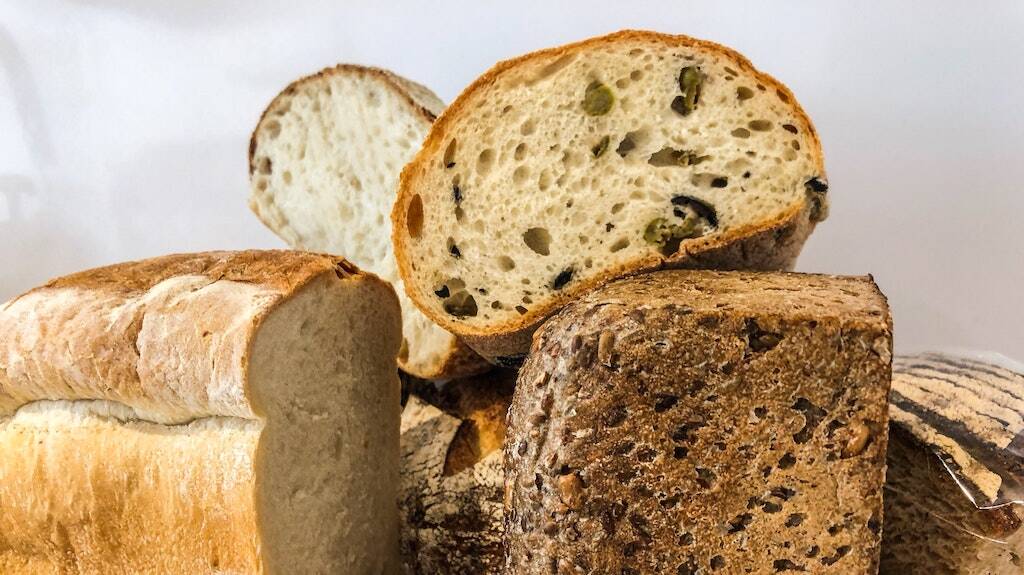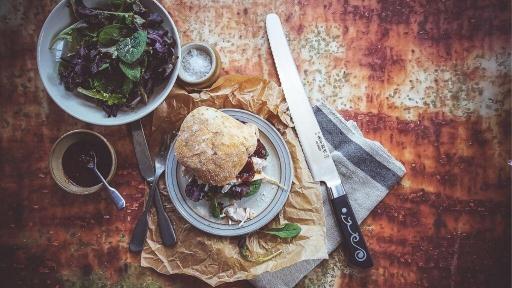Bread – a brief history
In case you hadn’t noticed, all of the topics covered here on The Grind are in some way related – admittedly in many cases distantly – to either knives or knife sharpeners, or both. Funny that!
Anyway a while back we put together a short article on cheese, and the great thing about cheeses is the existence of the ‘cheese knife’. There aren’t very many knives that are single purpose like the cheese knife. Except one – the bread knife. Which brings us on to bread.
Bread’s amazing really. Current thinking is that bread is one of the – if not the – first type of food prepared by humans. Whereas cheese was thought to have originated around 10,000 years ago, bread is believed to be around three times older, with evidence that humans in Europe were eating flatbread around 30,000 years ago, based on starch residue found on ancient rocks suggesting pounding of plants into a sort of flour. By the Neolithic period, around 10,000 years ago, humans had begun to farm, with grains for the production of bread an important crop.
Quite how humans discovered how bread rises (the leavening process) is not clear, but given that yeast spores are carried in the air pretty much everywhere, just leaving any sort of ‘dough’ out would result in spores landing on it and then doing their thing.
The Romans noted different approaches to bread making around their empire, with bread made in some parts using the yeast from foam skimmed from beer during fermentation (called ‘barm’), and other more wine drinking areas using an equivalent substance from wine fermentation.
Many cultures simply dispensed with the whole process of leavening the bread, for example roti from the Indian subcontinent is a type of flatbread made from stoneground whole wheat flour – this is the chapati – and its risen equivalent is naan bread.
Everyone was happily making their own versions of bread around the world until the modern age, when the white sliced loaf became the standard offering. If you’re looking for someone to blame for this, look no further than a man called John Dauglish who in 1862 discovered he could bypass the tiresome process of raising the bread by replacing the yeast with carbon dioxide dissolved in water, saving eight hours and getting bread out the door much more quickly.
In 1961 a trio of Brits improved on this with the Chorleywood bread process (named after the location of the British Baking Industries research establishment) to produce the aforementioned fluffy white loaf, still responsible for 80% of bread consumed in the UK today.
If you’re gluten intolerant or have Coeliac disease of course you shouldn’t really be eating any bread at all, since it’s the gluten in wheat (and in some other grains like barley and rye) – mainly the glutenin and gliadin proteins – that causes all the problems.
Life can be a little tough for people with either of these conditions, since wheat flour, as well as barley and rye, are used as ingredients in so many different foods and drinks, which then need to be avoided.
The downside is that it’s the gluten in bread that gives it its soft and fluffy structure, so inevitably completely gluten free bread can be a bit ‘solid’ in comparison and tends to break apart easily.
People with Coeliac disease cannot tolerate any gluten at all and can react very severely if they ingest anything with gluten in it, whereas people who are ‘merely’ gluten intolerant have a bad reaction after eating gluten foods.
Recent research indicates that gluten intolerance – with bread at least – may be related to the modern way it is prepared.
There are a few people who report that they can eat bread in France (not simply French bread in Australia!) without any side effects, but bread back in Australia still causes problems. Bread in France is still primarily made fresh every day in the local boulangerie, using the traditional slow baking process and using what is called ‘levain’ dough ie sourdough. Using this process, French bread has lower levels of both gluten and fructans than ‘normal’ bread, with the thinking being that this minimises any reaction associated with gluten.
It’s perhaps interesting to note that France has a lower incidence than most Western countries of coeliac disease and the associated irritable bowel syndrome as well as of obesity and type 2 diabetes.
Should we all be eating French bread? Oh la la!
More Information
https://phys.org/news/2010-10-prehistoric-ate-flatbread-years.html
https://www.bda.uk.com/resource/what-lessons-can-we-learn-from-the-french-baguette.html
https://en.wikipedia.org/wiki/Bread
Everything you ever wanted to know about butter but were too scared to ask
-
BaouRouge Precision Slicing Knife
Save50%Save $49.50Only$49.50$99.00Original price was: $99.00.$49.50Current price is: $49.50.








